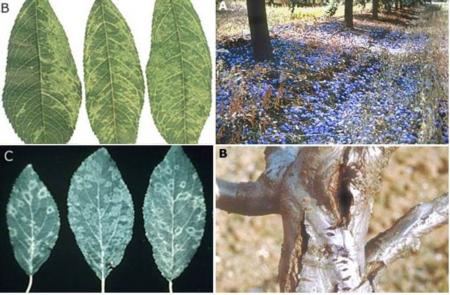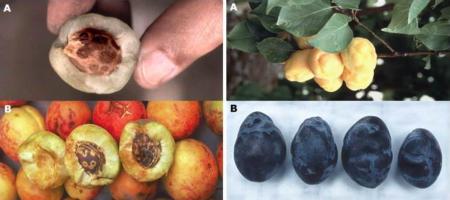Plum Pox Virus - What is it?
Plum Pox Virus is an exotic invasive pathogen, spread by aphids, which infects Prunus tree crops (including plum, prune, cherry, almond, peach and apricot). The virus compromises tree health (Photo 1), causes premature fruit drop (Photo 1) and reduces fruit quality (Photo 2). Infected fruit is not suitable for fresh market and most processed products.
Plum pox virus was identified in Europe in the early 20th century, and has rapidly spread world-wide since the late 1980s, likely due to the globalization of trade and travel. PPV is now present in all major fruit growing countries except the U.S., Australia, New Zealand, and South Africa.
The central valleys of California are particularly vulnerable to this threat because of the high concentration of Prunus crops, and a lack of geographical barriers to the spread of the disease by insects.
Source of images at right:
L. Levy, V. Damsteegt, R. Scorza, and M. Kolber. 2000. Plum Pox Potyvirus Disease of Stone Fruits. APSnet Features. Accessed June 16, 2014

Photo 1. Tree symptoms associated with PPV infection. Yellow and necrotic brown ring patterns on leaves with chlorotic bands or patches (left) and premature fruit drop and bark splitting (right).

Photo 2. Fruit symptoms associated with PPV infection. Apricot fruit with rings on the stones (left) and misshapen apricot and plum fruit (right).

